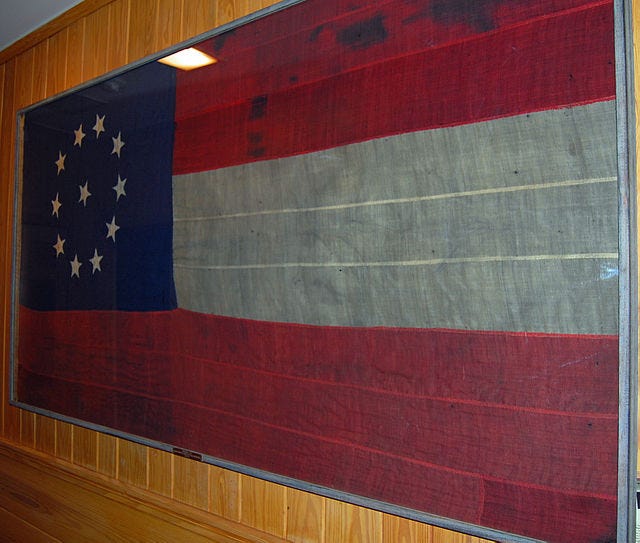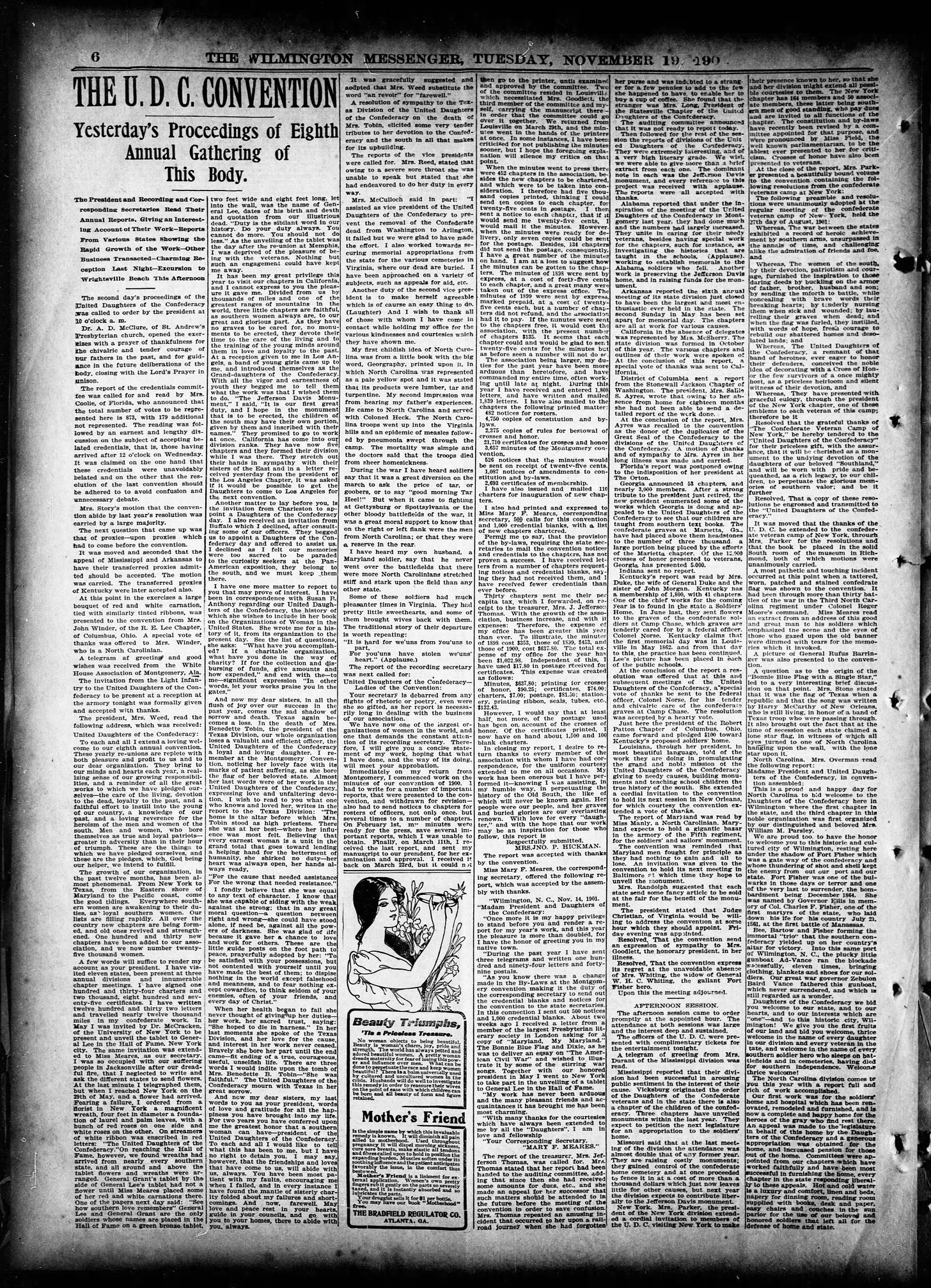The Lost Cause: A Pernicious Myth
Lost Cause mythology remains strong, but it needs to be stomped out like the propaganda it is.

The debate over Confederate statutes was once again ignited last Monday after Charlottesville's city council decided to remove two statues dedicated to Robert E. Lee and Stonewall Jackson. The decision was partially motivated by the violent arrival of white supremacists at the infamous 'Unite the Right" rally of 2017, which resulted in the murder of Heather Heyer, a counterprotester. But with this decision, a clear disconnect has emerged with some right-wing pundits.
Reacting to the city's decision, The Daily Wire's Cabot Phillips wrote, "Good. I prefer monuments of people who fought for America, not against it." Though many agreed with this perspective, others were not so enthused.


Elijah Schaffer, a reporter for Glenn Beck's Blaze Media, responded to Phillips, mocking him, but it was the conservative commentator and YouTuber Sydney Watson who revealed the right's fundamental misunderstanding of what is at stake with confederate monuments, saying: "Let's retroactively judge history and make changes to our society based on those judgments and then act like we're virtuous."

In most cases, this argument would make sense. Hindsight bias is not an acceptable or valid way to interpret history. However, when there is clear evidence that the artifacts under examination were part of a greater propaganda effort, this argument falls flat on its face. Despite what Watson may want to believe, most confederate statues were not built to commemorate the Civil War. They were made to sell an insidious myth: The Lost Cause.
What is the Lost Cause?
The Lost Cause's success was not immediate. Instead, it developed gradually, with several decades of work by Southern activists and former Confederate soldiers to re-frame the war. Southerners, humiliated by the war and suffering from the destruction of their communities, struggled to explain why they had fought for an institution that no longer existed. Rather than deal with the truth that they fought a war over slavery and led to the destruction of their homes, Confederate veterans and Southern women's groups developed a myth to explain away their pain. If they failed to promote this myth, it would destroy their legacies. As one former Confederate put it:
"If we cannot justify the South in the act of Secession, we will go down in History [sic] solely as a brave, impulsive but rash people who attempted in an illegal manner to overthrow the Union for our country."
Lost Causers emphasized the Southern perspective of the war, many times downplaying the role of slavery in its eruption. Instead, they emphasized the bravery of the confederate soldiers, the supposed happiness of slaves, and the infamous states' rights argument. Edward Pollard, a former general of the Confederacy, contributed to this lie with his 1866 memoir, The Lost Cause: a new southern history of the Confederates'. Much like his later counterparts, Pollard downplayed slavery, arguing that it was a convenient talking point for the North's sectional animosity. This myth would later find a promotion with the many memorial organizations that popped up over the following decades.
By the 1880s, numerous memorial organizations developed, peddling numerous ceremonies to commemorate the South and its supposed valor. Finally, in 1894, one of the most infamous Lost Causer organizations was founded: The United Daughters of the Confederacy. Though not compromised of soldiers from the war, this organization had an advantage that Confederate vets didn't: Their sex. Because women's organizing was not considered political, these women, mostly Southern socialites, could lobby local and state governments to erect monuments to the once reviled Confederacy. All while not appearing political.
The UDC held rallies, memorials, and conventions to promote their propaganda, with local officials endorsing and assisting their efforts. Looking back, it is painfully obvious successful they were.

The Southern Poverty Law Center, which maintains a long-term database of Confederate statues across the country, shows a clear pattern. In the early 20th century, the number of Confederate monuments skyrockets, especially during the rise of the KKK.
The UDC also promoted the KKK as the supposed saviors of the South, writing not one but two books dedicated to the Klan. One of which was specifically designed for children. In her book, The KKK or Invisible Empire, author Laura Martin Rose wrote that the racial violence was the result of Northerners stirring up trouble among the Black populace, saying: "These men hated everything that bore the name "Southern," and at once began to inflame their negroes against their former masters." It is perhaps unsurprising to learn that Rose hoped this book would inspire young Southerners to attack African Americans.
The UDC's perversion of history
From the very beginning, the UDC sought to glorify the South. The UDC's constitution, which they revised in 1895, stated that the purpose of the organization was to "honor the memory of those who served and those who fell in the service of the Confederate States and record the part taken by Southern women..." It was a duty with which the UDC fought tooth and nail to fulfill.
The UDC and its allies worked tirelessly to suppress outside perspectives that challenged their narratives, establishing the office of the historian-general in 1905 to suppress textbooks it deemed "unjust to the South." Far from an impartial history of the Civil War, the UDC created a neo-Confederate propaganda machine to hide the truth. In this context, the statues exist, and in this context, they are scrutinized.
Despite claims to the contrary, these statues are not impartial artifacts that help people learn from their past. Rather, they seek to obfuscate the truth and lie to generations of young children, all the while ignoring the suffering of African Americans subjected to this racist mythology. Charlottesville's statue to Lee is no different. It was erected in 1924 and was marked with an inscription that argues Lee fought for "the ideals of Democracy," ignoring how his contribution to the Southern aristocrats' power kept Black men, women, and children in chains. It, too, promotes the state's rights lie.
Why does it matter?
Despite the pundits' arguments to the contrary, these statues have never been about teaching history. They were, and remain, a symbol of the South's racist and violent past. The fact that white nationalists like Richard Spencer defend them is proof to that effect. Men like Spencer will shout about being replaced by non-whites while 'defending' statues of white heritage because that is what these monuments were intended to inspire. These monuments have always been symbols of the white supremacist domination that made the Confederacy what it was. No amount of historical revision can change that.




